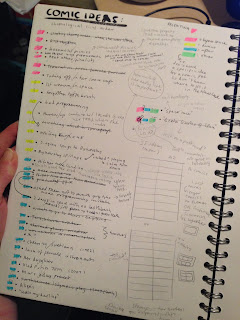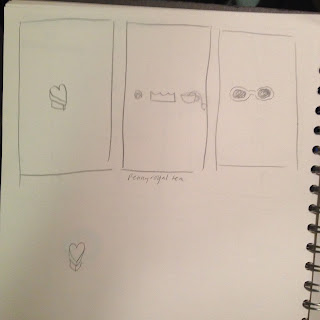I was having kind of a bad week last week, so I missed the first crit because I hadn't done much research beyond wiki (yikes), and couldn't face coming in. However, now that I'm home for the holidays and have my family to support me, I've been feeling better and got some research done!
My 3 persons of note are:
- Noam Chomsky
- Valentina Tereshkova
- Prince Buster
I'd only heard of Noam Chomsky and even that was vague, I wasn't sure who exactly he was or what he'd done in his life.
When I was doing my initial Google searches, I had a couple of ideas for comics for each person! I love drawing comics and inserting humour into my work where I can, as I did in the very first brief we got (typology poster), as well as a little bit of my own personality.
In the last week of term I did manage to venture out to Travelling Man to buy myself something to cheer me up a bit, and I got Kate Beaton's anthology of comics, Hark A Vagrant, which I've been wanting to buy forever. Reading the book was what gave me the idea to make this brief all about comics! Kate Beaton makes funny little comic strips about historical figures and literary characters, based on real events (or fictional if it was a character), but inserting modern humour.
These are just some of my favourites. I love her line quality and use of pen and ink textures - really simple but there's something about the line quality and low-fi almost childlike drawing that gives the work that added humour. I figured this brief would be a good chance for me to further my development and come out of my analytical shell in terms of my visual signature.
I figured that whoever I ended up choosing out of the three I was given, I could create lots of little comic strips based on things they did or events in their life etc etc, and arrange them across the 3 formats we were given.
SO
I read some stuff, watched some stuff, listened to some stuff and then made some mind maps, which is how I used to like working at school when developing ideas:
As you can see, I had the most ideas for Valentina Tereshkova! I really enjoyed reading things about her life, and I came up with A LOT of ideas for comic strips. I had a few ideas for Noam and Buster, but I just wasn't as interested in communicating them. I found wrapping my head around Noam Chomsky's theories on language quite difficult, but I was quite interested in his political activism in his later years. There were also a few aspects of Prince Buster's life that I found interesting, like his musical feud with Leslie Kong, but I just didn't have the same wealth of ideas that I did with Valentina!
Matt also made me think about something in the last brief. Because I was doing musical genres in cities, I picked iconic figureheads who all happened to be male, and he asked where the women were. So I was also influenced to do a woman.
Girl power!











































